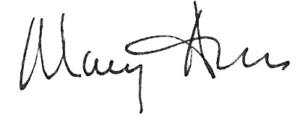Kickboxing or cocktails? Networking 101
 In the past month, we’ve had three very nice at-bats from referral sources. Two were from connections made more than two decades ago. Two have resulted in projects, and I have great hope on a third success, although the jury is still deliberating.
In the past month, we’ve had three very nice at-bats from referral sources. Two were from connections made more than two decades ago. Two have resulted in projects, and I have great hope on a third success, although the jury is still deliberating.
All this activity has gotten me thinking about networking – why we do it, how we do it, how we maintain connections once established. I’m still refining my techniques, but four things stand out to me:
It has to work for you.
When I restarted my PR career in 1999, the partners at the agency where I landed bought a membership for me in the University Club, which has athletic and dining facilities. I was encouraged to take exercise classes with team members of the new client I had just brought in – and I did. And it was about as awkward as you are picturing it now.
After a few months, I dropped the classes in favor of after-work cocktails – and achieved much better results. Ending my day with clients over a relaxing beverage where we could talk (and I could uncover areas where we could provide additional services) proved to be a better recipe than kickboxing with those same clients at 6 a.m.
My husband defaults to golf when he’s networking. We’ve both taken clients to concerts and sporting events. I’ve had a colleague who used geocaching to network. Another who joined a professional organization to meet and connect. Through some initial false starts, I’ve learned whatever way you choose to network has to work for you – not your boss. Not for a theoretical cause.
For you.
Jump in.
When I landed full-time on the business desk of The Grand Rapids Press in 1995, my boss encouraged me to take sources to lunch on the company dime. I received no directions or advice beyond this admonition.
Would sources want to go to lunch with me? What would we talk about? I was young in my career, and the idea of having access to an expense account was intriguing. But it was also more than a little intimidating.
But I jumped in and invited a source from one of the auto suppliers I covered to lunch at San Chez, which was still very new to the dining scene. When I explained the concept of small plates and sharing food, he looked horrified and ordered his own salad – and I realized it may not have been the best lunch choice when I didn’t know someone very well.
Still, am glad I decided to jump in. The many more successful lunches and dinners have far outweighed that first one. It still takes a bit of courage to ask someone to join you for coffee or a bite to eat, particularly when you are in the early stages of your career, but it’s almost always worth the effort.
Look for the connection.
Without a doubt, Steve Waterbury is the best connector I know. I’ve had the opportunity to call this partner at Warner Norcross + Judd my friend, mentor and colleague for two decades, and I am still amazed at how – and how well – he networks.
Steve has an uncanny ability to discover and remember nuggets of information about those he meets and then draw connections to others. It might be over a college affiliation, a political leaning, a trip or movie. You might not even recall having shared that particular tidbit of information with Steve. But they have a way of boomeranging back, sometimes years later, in introductions or connections that astound.
The first time I had lunch with Steve, he brought along a young associate he thought I might have a lot in common with. Turns out, we did not – but during that lunch, Steve and I discovered a number of connections that allowed us to build a solid working relationship and then a friendship.
I have learned a lot from Steve over the years, but the most powerful lesson has been to seek, find and celebrate the connections between people.
Follow up + be genuine.
When you have made a new connection, take a minute after that first successful interaction to follow up. Reach out on LinkedIn and be sure to add a personal note. Drop a handwritten card in the mail. Send an email with a follow-up opportunity for coffee or an event.
Then keep it going. Forward articles or online mentions you think might resonate. Share a cartoon. Find an opportunity to connect your connection to others who might be beneficial.
But don’t try too hard. I was recently at a lunch and met a woman who was clearly working the table for connections. I felt she was more interested in getting my business card than getting to know me. And while I received a LinkedIn invite and a follow-up card, it felt very rote.
Whether you’re just jumping into the career pool or have been doing laps for years, networking is a necessary skill for success. We talk about relationships a lot at Sabo PR – why they are important, why we focus on them, why we put them first. The reality is that the majority of our professional relationships have come from some sort of networking. And it’s these relationships that have been important to our success as a firm – and for me personally.
